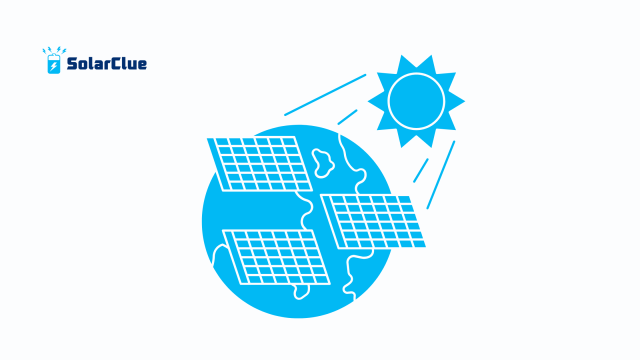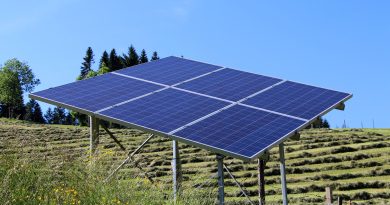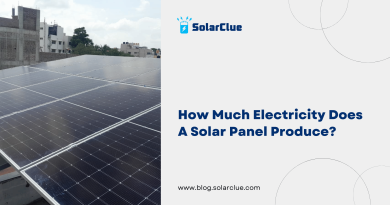India Becomes 3rd Largest in Solar and Wind Power
India is making global headlines again, but this time for all the right reasons. According to the sixth edition of Ember’s Global Electricity Review, India renewable energy sector has witnessed a historic leap, overtaking Germany to become the world’s third-largest producer of electricity from solar and wind power. This landmark achievement underscores the country’s rising commitment to India clean energy, climate action, and sustainable growth. It’s not just a victory for India, but a step forward for the global climate movement.
Table of Contents
- 1 India’s Renewable Energy Boom in 2024
- 2 Surpassing Germany: What It Means
- 3 Solar Power: India’s Driving Force
- 4 India Wind Power and Hydropower Contribution
- 5 Low-Carbon Energy’s Historic Global Milestone
- 6 Key Drivers of India’s Clean Energy Growth
- 7 Global Implications of India’s Clean Energy Rise
- 8 Challenges Ahead for India’s Renewable Energy Expansion
- 9 Role of Renewable Energy Companies in India
- 10 The Role of Policy and Government Initiatives
- 11 Environmental and Economic Benefits
- 12 Future Outlook of Renewable Energy in India
- 13 Why India is Called a Solar Superpower
- 14 International Collaboration and Investment
- 15 Integration of Battery Storage and Smart Solutions
- 16 Urban and Rural Adoption Trends
- 17 Conclusion
- 18 FAQs
India’s Renewable Energy Boom in 2024
India’s share of electricity from solar and wind power rose to 10% in 2024, contributing significantly to the 15% global electricity share from these sources. This notable surge highlights the country’s accelerating shift towards green energy solutions. With consistent government support, technological advancements, and increased investments, India is rapidly transitioning from fossil fuels to a diversified energy portfolio centered around renewables.
Surpassing Germany: What It Means
By surpassing Germany, a pioneer in renewable energy, India is now only behind China and the United States in renewable power generation. This transition is a testament to the robust policies and expanding India energy sector, making it a leader in the global clean energy movement. Germany’s years-long dominance in the clean energy race has now been challenged by India, a developing country with a growing economy and a rising population that demands sustainable power solutions.
Solar Power: India’s Driving Force
Solar energy continues to dominate India’s clean energy growth. In 2024 alone, India solar energy capacity increased by 24 GW, more than double the previous year. Solar power systems contributed 7% to India’s electricity, with total solar power generation growing by 20 TWh. The affordability of solar technology, coupled with India’s vast geographic potential for sunlight, has made solar a cornerstone of the country’s energy strategy.
Government-led initiatives such as the PM-KUSUM scheme and rooftop solar subsidies have encouraged large-scale and decentralized solar panel installation. States like Rajasthan, Gujarat, and Tamil Nadu are leading the charge, turning barren lands into hubs of energy innovation.
India Wind Power and Hydropower Contribution
While solar leads the charge, India wind power also plays a vital role, accounting for a substantial part of the 10% total wind and solar share. With strong wind corridors in coastal regions and inland plateaus, India has tapped into a previously underutilized resource.
Additionally, hydropower contributed 8% to the national grid, further enriching the clean energy mix. Although hydro has faced environmental scrutiny, its role in balancing intermittent solar and wind power cannot be overlooked. Pumped hydro storage is also gaining traction as a solution for energy storage and grid stability.
Low-Carbon Energy’s Historic Global Milestone
Globally, low-carbon sources (including renewables and nuclear power) accounted for 40.9% of electricity in 2024—crossing the 40% threshold for the first time since the 1940s. In India, clean energy sources contributed 22% to total electricity generation. This reflects not only domestic commitment but also a shared global shift towards a sustainable energy ecosystem.
Key Drivers of India’s Clean Energy Growth
National Commitments
India’s Nationally Determined Contributions (NDCs) aim for 50% of installed electric capacity to come from non-fossil fuel sources by 2030. An ambitious goal of 500 GW renewable energy capacity also drives policies and investment. These targets have spurred public-private partnerships and shaped long-term planning in the energy domain.
Increased Solar Investments
A significant increase in funding and policy support has resulted in massive growth in solar panel installation projects across the country. From large solar parks to residential rooftop systems, the government is offering capital subsidies and net-metering mechanisms to incentivize both industrial and individual consumers.
Technological Advancements
Modern technologies like AI, machine learning, and IoT are being integrated into solar power systems, enhancing India energy efficiency and performance tracking. Smart inverters, remote monitoring systems, and predictive maintenance are reducing operational costs and increasing reliability.
Private Sector Involvement
Many renewable energy companies in India are at the forefront of innovation. These include Adani Green, Tata Power Solar, and ReNew Power, which are developing utility-scale projects and bringing advanced technology into mainstream operations.
Global Implications of India’s Clean Energy Rise

India’s progress influences not just domestic policy but also global climate strategies. It strengthens energy security and supports economic growth, giving developing nations a roadmap to transition towards renewable energy. As energy demand surges globally, India’s model of clean growth is seen as both aspirational and replicable.
Challenges Ahead for India’s Renewable Energy Expansion
Funding Gaps
To meet its 2030 goals, India must increase renewable energy funding by 20% annually. Without this, the target of 500 GW may remain unmet. Financial instruments like green bonds and climate funds will play a critical role in bridging this gap.
Infrastructure Needs
Expanding grid infrastructure is critical to support the influx of solar and wind power. Smart grids, decentralized networks, and upgraded transmission lines are essential to reduce curtailments and losses.
Balancing Growth and Demand
With rising electricity demand, India must ensure renewable power generation scales up rapidly to meet consumption. Peak-hour energy storage and demand-side management will be essential strategies.
Role of Renewable Energy Companies in India
The surge in clean energy is fueled by renewable energy companies in India like Adani Green, Tata Power, and ReNew Power. These firms are investing heavily in solar energy and wind power, offering scalable green energy solutions. They are also investing in R&D and forming global partnerships to boost India’s innovation capacity.
The Role of Policy and Government Initiatives
The Indian government has implemented favorable policies, subsidies, and tax benefits to boost solar panel installation and other clean energy projects. Policies such as the National Solar Mission, Production Linked Incentives (PLI), and Viability Gap Funding (VGF) are transforming India’s energy landscape.
Environmental and Economic Benefits
Investing in India renewable energy has dual benefits—reduced carbon emissions and increased employment. The clean energy sector is becoming a significant source of job creation in the country, especially in rural areas. It also reduces the country’s dependence on imported fossil fuels, improving the trade balance.
Future Outlook of Renewable Energy in India
India is poised to continue its upward trend in clean energy, focusing on smart grids, battery storage, and hybrid systems combining solar and wind power. Innovations in hydrogen fuel, floating solar farms, and offshore wind are also in the pipeline.
Why India is Called a Solar Superpower
Global leaders, including the UN climate change chief, have labeled India a “solar superpower”. This recognition is a result of its relentless pursuit of solar power generation and its role in shaping the future of the India energy sector. The country’s proactive stance and quick implementation have turned it into a case study for sustainable development.
International Collaboration and Investment
India’s growing renewable energy capacity is attracting foreign direct investments (FDIs) and technology partnerships, essential for large-scale deployment and innovation. Nations are looking to India as a clean energy ally, opening up avenues for exports and co-development.
Integration of Battery Storage and Smart Solutions
To support intermittent solar and wind power, India is investing in grid-scale battery storage systems. Projects like the 1 GWh battery storage tender by SECI show India’s commitment to technological solutions for energy reliability.
Urban and Rural Adoption Trends
While metros are embracing rooftop solar panel installation, rural India is not far behind. Solar-powered irrigation, mini-grids, and lighting solutions are transforming livelihoods and productivity in villages.
Conclusion
India’s ascent to the third spot in global solar and wind power generation is not just a milestone, but a movement. It represents a shift toward a cleaner, greener, and more sustainable future, not just for India but for the world. By leveraging technology, policy support, and international cooperation, India is setting an inspiring example of how developing countries can lead the global clean energy revolution. Its progress is not only rewriting the global energy map but also redefining what’s possible for emerging economies.
So if you’re looking to explore or invest in India’s clean energy landscape, there’s never been a better time. Learn more about solar energy, solar panel installation, and the latest in renewable energy in India at solarclue.com and deep-dive into expert insights at blog.solarclue.com.
FAQs
1. What percentage of India’s electricity comes from renewable energy?
As of 2024, around 22% of India’s electricity comes from clean sources, with solar and wind power contributing 10% and hydropower 8%.
2. How much solar capacity did India add in 2024?
India added 24 GW of solar energy capacity in 2024, more than double the previous year’s addition.
3. Which companies are leading in renewable energy in India?
Top renewable energy companies in India include Adani Green, Tata Power, and ReNew Power.
4. What is India’s target for renewable energy by 2030?
India aims to achieve 500 GW of renewable energy capacity and 50% of its installed electricity capacity from non-fossil sources by 2030.
5. How can I get a solar panel system for my home or business in India?
You can explore various solar power systems and services at solarclue.com or read more about them at blog.solarclue.com.
Stay tuned and visit our website to be part of India’s clean energy revolution—your green future starts here!



